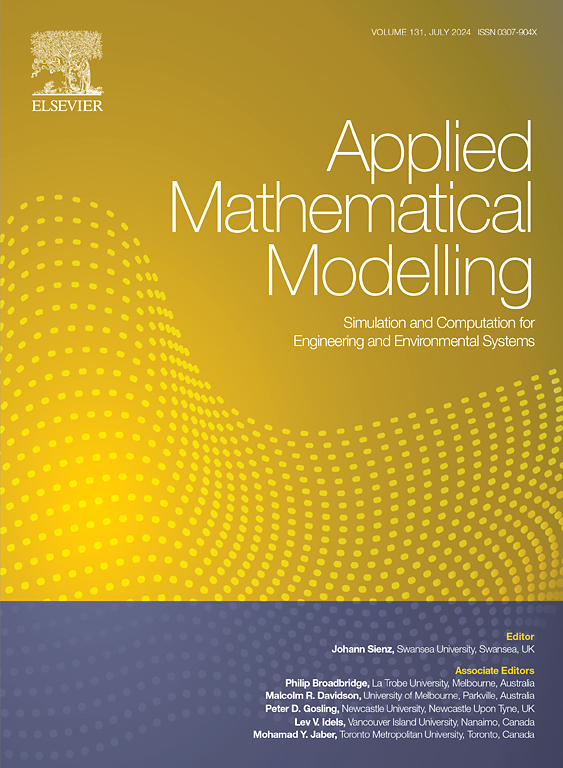自重负载下具有应力和动态约束的多相材料拓扑优化框架
IF 4.4
2区 工程技术
Q1 ENGINEERING, MULTIDISCIPLINARY
引用次数: 0
摘要
这项工作旨在首次优化承受自重荷载的多材料结构。忽略自重载荷会降低设计的可靠性,为了提高优化设计的强度,我们考虑了带有体力的应力约束多材料拓扑优化(MMTO)。本文采用了两种应力约束聚合方案,并进行了比较,如 K-S 聚合方案和 p-norm 聚合方案。由于局部应力问题,这两种方案对应力约束都很有效。此外,本研究还引入了自重加载和应力约束的特征值约束(MMTO)。因此,优化结果不仅确保了自重荷载标准,还减少了应力集中,提高了结构自由振动带来的稳定性。所提出的方法是一种交替主动相位算法(AAPA),用于处理本研究中考虑的问题。结果表明,当不考虑使用多材料的自重荷载时,自重荷载导致的结果与优化结果完全不同。本文章由计算机程序翻译,如有差异,请以英文原文为准。
Topology optimization framework of multiple-phase materials with stress and dynamic constraints under self-weight loads
This work aims to optimize the multi-material structures subjected to self-weight loading for the first time. Ignoring the self-weight loads results in less reliable designs, and to enhance the strength of optimized designs, stress-constrained multi-material topology optimization (MMTO) is considered with body forces. Two stress constraint aggregation schemes are employed and comparable, such as the K-S and p-norm aggregation schemes. Both of these schemes are effective with respect to stress constraints due to local stress issues. Moreover, eigenvalue constraints (MMTO) are introduced in this study with self-weight loading and stress constraints. Thus, the optimized results not only ensure self-weight load criteria but also reduce stress concentration and improve stability due to free vibration of structures. The proposed approach is an alternating-active-phase algorithm (AAPA) for dealing with the problems considered in this work. Results show that the results caused by self-weight loads are totally different from optimized results when they are not considered with self-weight loads using multi-materials.
求助全文
通过发布文献求助,成功后即可免费获取论文全文。
去求助
来源期刊

Applied Mathematical Modelling
数学-工程:综合
CiteScore
9.80
自引率
8.00%
发文量
508
审稿时长
43 days
期刊介绍:
Applied Mathematical Modelling focuses on research related to the mathematical modelling of engineering and environmental processes, manufacturing, and industrial systems. A significant emerging area of research activity involves multiphysics processes, and contributions in this area are particularly encouraged.
This influential publication covers a wide spectrum of subjects including heat transfer, fluid mechanics, CFD, and transport phenomena; solid mechanics and mechanics of metals; electromagnets and MHD; reliability modelling and system optimization; finite volume, finite element, and boundary element procedures; modelling of inventory, industrial, manufacturing and logistics systems for viable decision making; civil engineering systems and structures; mineral and energy resources; relevant software engineering issues associated with CAD and CAE; and materials and metallurgical engineering.
Applied Mathematical Modelling is primarily interested in papers developing increased insights into real-world problems through novel mathematical modelling, novel applications or a combination of these. Papers employing existing numerical techniques must demonstrate sufficient novelty in the solution of practical problems. Papers on fuzzy logic in decision-making or purely financial mathematics are normally not considered. Research on fractional differential equations, bifurcation, and numerical methods needs to include practical examples. Population dynamics must solve realistic scenarios. Papers in the area of logistics and business modelling should demonstrate meaningful managerial insight. Submissions with no real-world application will not be considered.
 求助内容:
求助内容: 应助结果提醒方式:
应助结果提醒方式:


